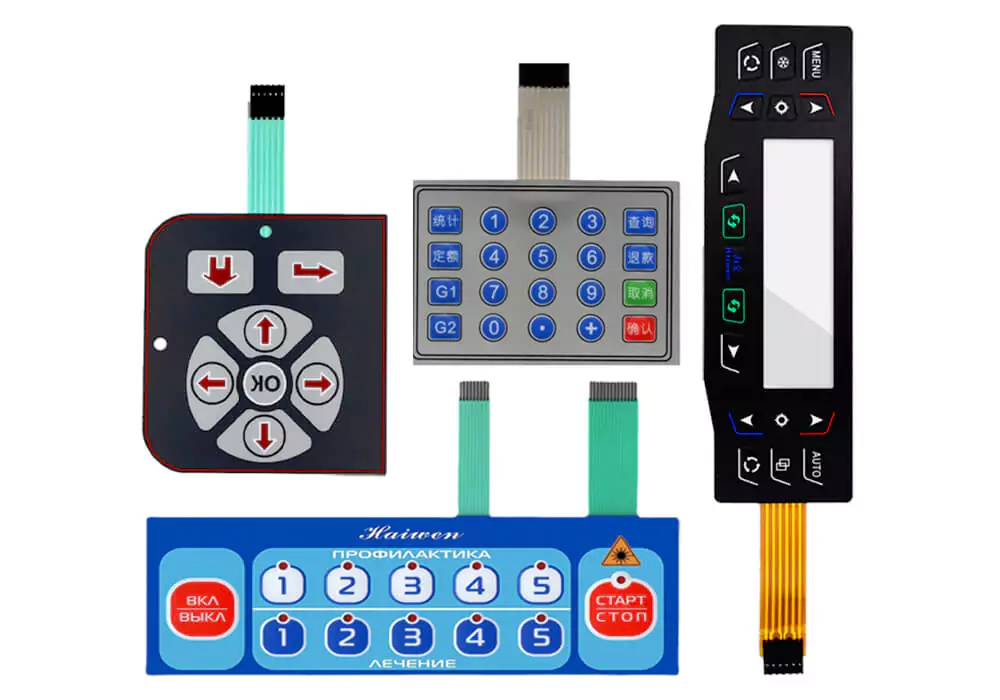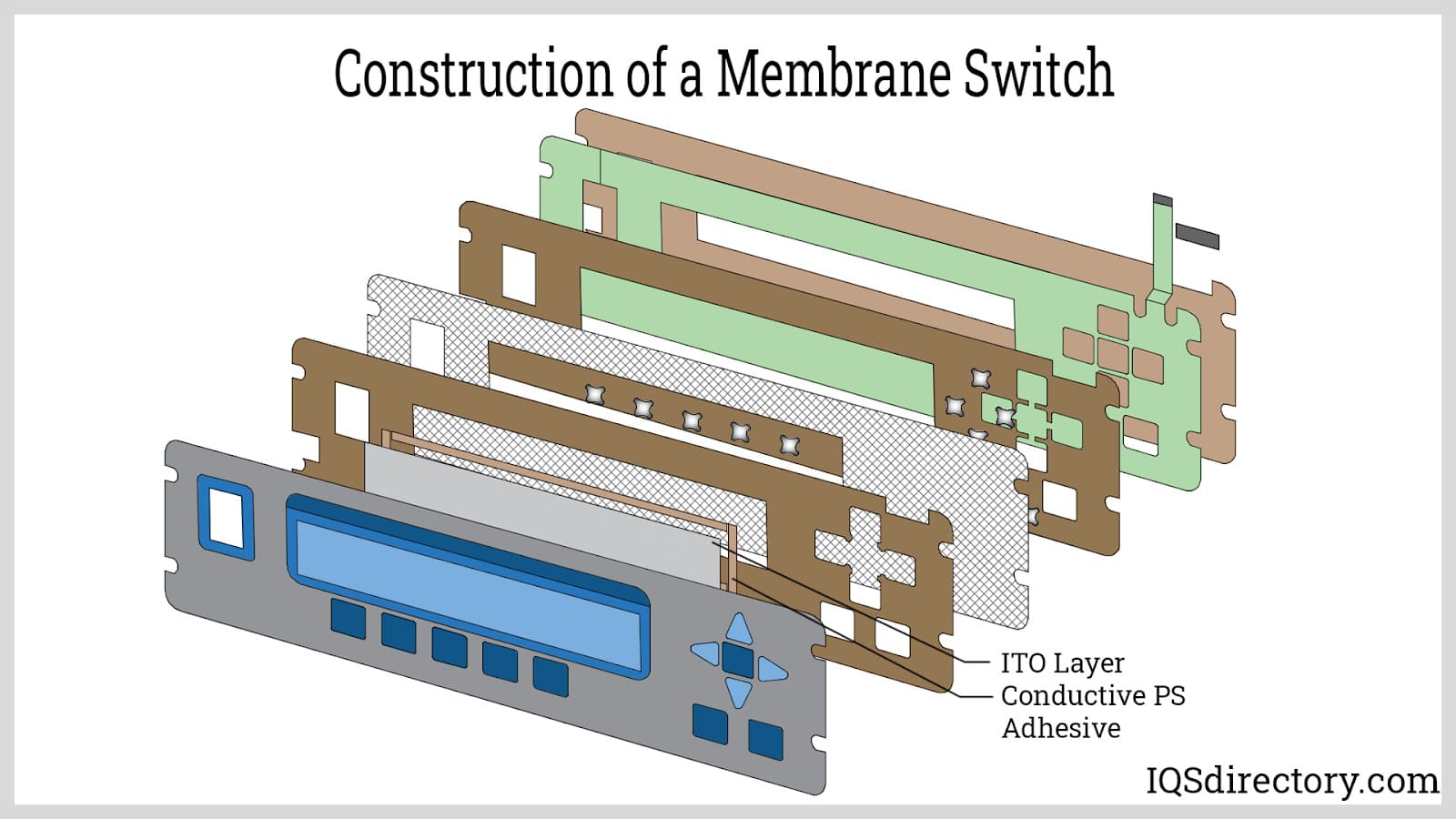Comprehending the Significance of Membrane Switch in Modern Electronic Devices
Membrane layer switches are essential components in contemporary electronic devices. They offer a mix of functionality and style that boosts individual interaction. Their long lasting and light-weight nature makes them suitable for various applications. As sectors advance, the need for modification and progressed functions grows. Understanding exactly how membrane layer switches add to innovation reveals their relevance fit the future of electronic devices. What exists ahead for this technology?
The Essentials of Membrane Switch Over Innovation
Commonly overlooked, membrane switch technology plays an important function in the modern electronic devices landscape. These tools, composed of several layers, work as user interfaces for different digital items, varying from family home appliances to medical devices. A common membrane layer button contains a visuals overlay, a spacer layer, and a circuit layer, which are carefully set up to produce a practical interface.When stress is put on the overlay, the circuit layer is finished, allowing signals to be transferred to the gadget. This innovation is understood for its adaptability, making it possible for customization in functionality, shape, and layout to fulfill details customer requirements. Furthermore, membrane layer buttons are light-weight and thin, making them appropriate for applications where room is a costs. Their sturdiness and resistance to environmental variables even more enhance their charm, guaranteeing they can withstand rough conditions while maintaining performance. In general, membrane switch modern technology is indispensable to developing user-friendly and reliable electronic gadgets

Key Benefits of Membrane Switches
Membrane changes deal a number of vital advantages that make them a preferred selection in different electronic applications. Their style enables a compact form element, enabling manufacturers to create light-weight and smooth devices. Furthermore, membrane layer switches are resistant to dust, wetness, and chemicals, which improves their resilience and long life in demanding settings. The tactile comments provided by these buttons can boost customer experience, making them very easy and user-friendly to operate.Furthermore, membrane switches can be tailored with diverse graphics and shades, allowing for special branding opportunities. The production procedure is generally cost-effective, particularly for high-volume production, as it minimizes assembly time and simplifies layout. Membrane layer switches require very little maintenance, contributing to reduced general functional prices. These advantages highlight their expanding popularity in modern-day electronics, where dependability and straightforward interfaces are essential.

Applications Across Numerous Industries
The adaptability of membrane switches enables their extensive adoption throughout various markets. In the medical field, they are typically utilized in diagnostic devices and individual monitoring systems, providing a sturdy interface immune to contaminants. The automotive industry uses membrane layer switches for dashboard controls, improving user experience with streamlined styles that endure harsh problems. In consumer electronics, they serve as control board for tools such as microwaves and coffee manufacturers, providing an user-friendly user interface that is simple to tidy. The aerospace industry uses membrane layer switches in cabin controls, where dependability and area effectiveness are paramount. Furthermore, the commercial sector leverages these buttons in equipment and control systems to assure durable operation in requiring settings. This wide variety of applications emphasizes the flexibility of membrane switches, making them indispensable parts in boosting functionality and individual communication throughout diverse technological landscapes.
Modification and Style Versatility

Future Trends in Membrane Change Development
Emerging fads in membrane switch advancement show a growing emphasis on boosted performance and combination with clever technologies. As customer need for a lot more advanced digital tools boosts, makers are concentrating on creating membrane changes that not only serve basic operational duties yet also include attributes like touch sensitivity, backlighting, and haptic feedback.Furthermore, innovations in products are anticipated to boost durability and ecological resistance, making membrane layer changes appropriate for diverse applications in industries such as healthcare, automobile, and customer electronic devices. The integration of capacitive touch technology is most likely to become more common, permitting sleeker layouts and boosted user interfaces. membrane switch.Additionally, the increase of the Internet of Points (IoT) is motivating the development of membrane layer switches over that can interact wirelessly with various other devices, enhancing interconnectivity. image source Overall, the future of membrane layer switch technology appears promising, driven by technology and the quest of user-friendly solutions
Often Asked Questions
Just How Do Membrane Switches Contrast to Traditional Mechanical Buttons?
Membrane layer switches, being extra space-efficient and offering a streamlined design, contrast with conventional mechanical buttons that provide tactile comments. The previous commonly include adjustable graphics, while the latter usually assure sturdiness and reliability in different applications.
What Products Are Frequently Made Use Of in Membrane Change Production?
Membrane switches are normally generated utilizing materials such as polyester, polycarbonate, and published conductive inks. These products give responsiveness, flexibility, and durability, making them ideal for numerous applications in digital tools and interface.
Can Membrane Changes Be Repaired or Recycled?
Membrane buttons can usually be fixed, specifically if small concerns emerge, such as sticky failing or surface area damages. Complete reuse is generally limited due to wear and potential degradation of products over time.
Exactly How Do Ecological Variables Affect Membrane Switch Over Performance?
Environmental variables, such as temperature, useful source exposure, and moisture to chemicals, greatly affect membrane switch performance. Extreme problems can bring about destruction, affecting responsiveness and long life, inevitably endangering the performance of the tool in numerous applications.
What Is the Regular Life Expectancy of a Membrane Layer Switch over?
The normal life-span of a membrane layer button usually varies from 1 to 5 million actuations, depending on variables such as use frequency, environmental problems, and the products utilized in manufacturing, affecting toughness and performance long life. A typical membrane button is composed of a graphic overlay, a spacer layer, and a circuit layer, which are meticulously assembled to create a functional interface - membrane switch.When pressure is used to the overlay, the circuit layer is completed, permitting signals to be sent to the device. The tactile comments given by these buttons can enhance customer experience, making them instinctive and easy to operate.Furthermore, membrane switches can be customized with diverse graphics and colors, enabling for special branding chances. As consumer demand for a lot more sophisticated electronic tools increases, producers are focusing on developing membrane layer switches over that not only offer fundamental operational roles official website however additionally incorporate functions like touch sensitivity, backlighting, and haptic feedback.Furthermore, developments in products are anticipated to improve durability and ecological resistance, making membrane changes ideal for varied applications in sectors such as healthcare, automobile, and customer electronic devices. The combination of capacitive touch technology is most likely to come to be more prevalent, allowing for sleeker styles and enhanced customer interfaces.Additionally, the surge of the Internet of Points (IoT) is motivating the advancement of membrane switches over that can communicate wirelessly with other tools, boosting interconnectivity. Membrane layer buttons, being a lot more space-efficient and using a smooth layout, comparison with conventional mechanical switches that provide tactile comments